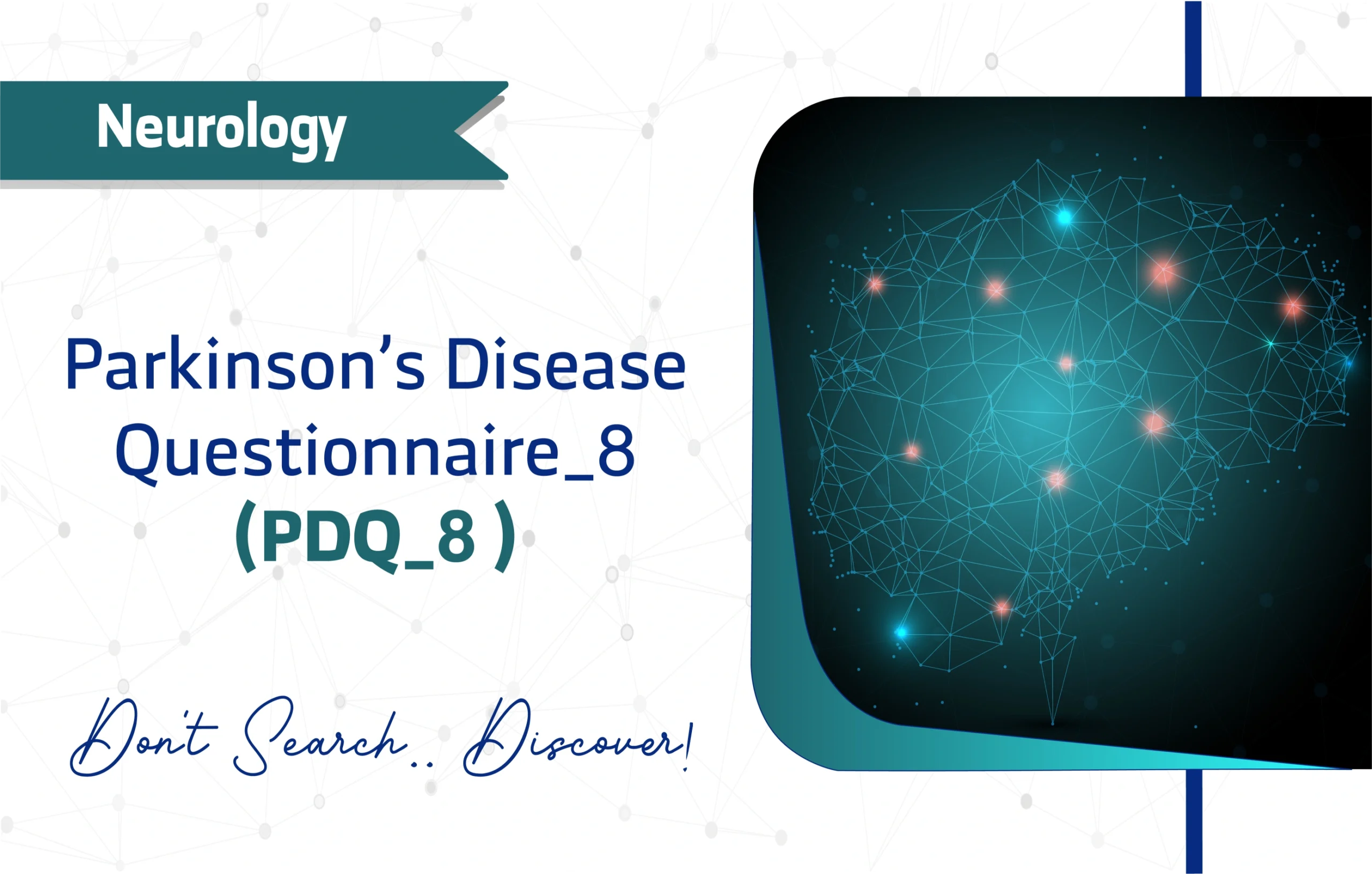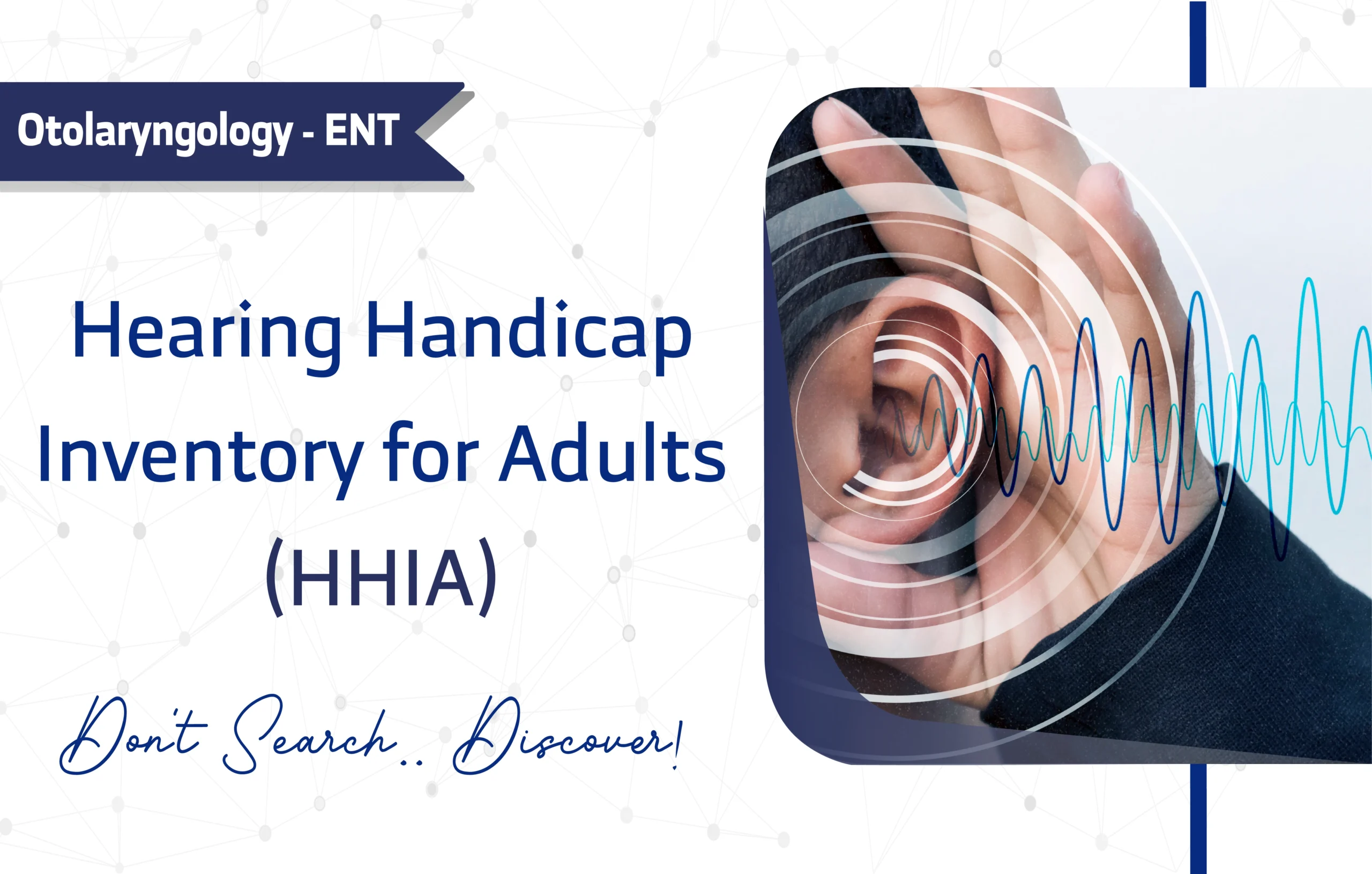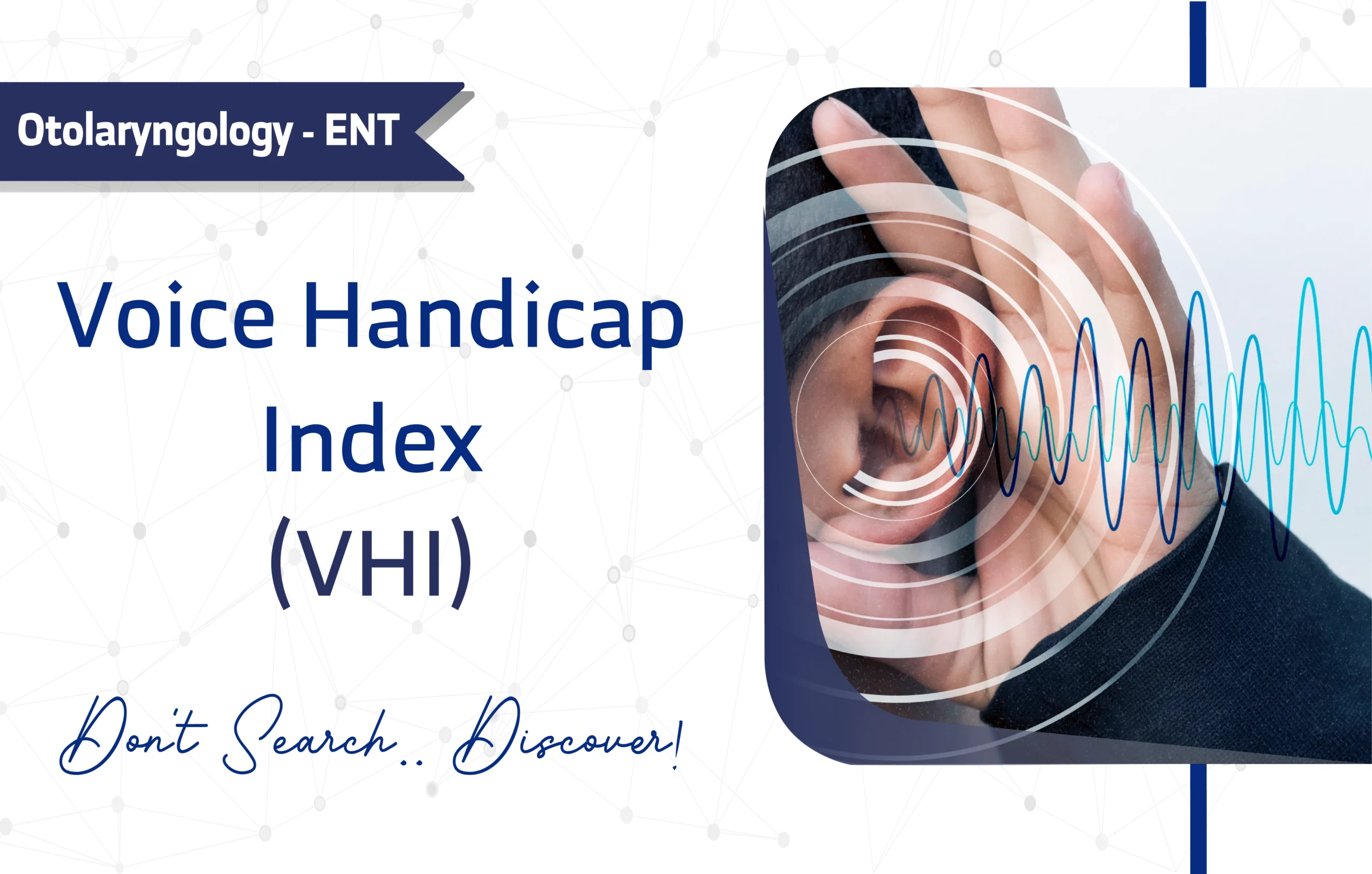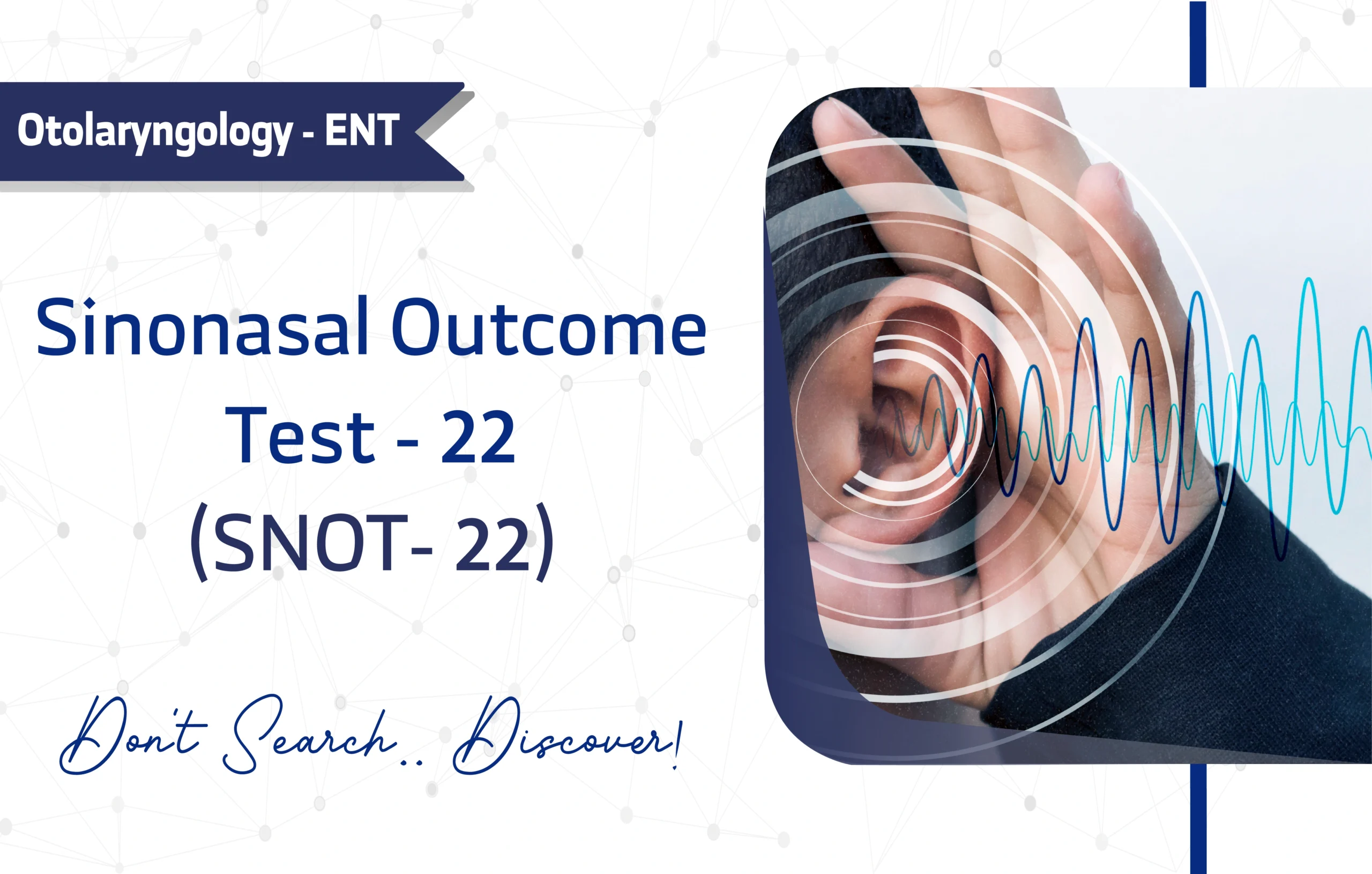Introduction
The Parkinson’s Disease Questionnaire-8 (PDQ-8), developed by Crispin Jenkinson and colleagues, is a concise, validated tool designed to evaluate health-related quality of life (HRQoL) in individuals with Parkinson’s disease (PD). First published in 1997, it has garnered over 533 citations on Google Scholar, reflecting its widespread use in neurology research and clinical practice (Jenkinson et al., 1997). As a shortened version of the PDQ-39, the PDQ-8 offers a practical solution for busy clinical settings.
Consequently, this article provides researchers and clinicians with a comprehensive guide to the PDQ-8’s structure, applications, and clinical value, ensuring actionable insights for improving patient outcomes.
Key Features of the Parkinson’s Disease Questionnaire-8 (PDQ-8)
Purpose and Use
The PDQ-8 serves as a self-report instrument to assess HRQoL in individuals with Parkinson’s disease. Specifically, it evaluates the impact of PD symptoms on daily life, enabling clinicians to monitor disease progression and tailor interventions. Moreover, researchers use it in clinical trials and epidemiological studies to quantify PD’s impact. For example, its brevity makes it ideal for longitudinal studies where minimizing patient burden is critical.
Target Population
The PDQ-8 targets adults aged 18 and older, including:
Young Adults (18–24 years)
Middle-Aged Adults (25–44 years)
Older Adults (45–64 years)
Seniors (65+ years)
It is designed for individuals with Parkinson’s disease, making it suitable for neurology clinics and research settings. However, it lacks validation for pediatric or adolescent populations.
Questionnaire Details
The PDQ-8 comprises eight items, each addressing a specific aspect of PD’s impact. These include:
Mobility: Difficulty getting around in public.
Activities of Daily Living: Challenges and difficulties with dressing.
Emotional Well-Being: Feelings of depression.
Stigma: Embarrassment in public due to PD.
Social Support: Issues with close personal relationships.
Cognitions: Problems with concentration (e.g., reading or watching TV).
Communication: Difficulty communicating with others.
Bodily Discomfort: Painful muscle cramps or spasms.
Scoring Method
The PDQ-8 employs a 5-point Likert scale (Never = 0, Occasionally = 1, Sometimes = 2, Often = 3, Always or cannot do at all = 4), yielding a total score of 0 to 32. Notably, there is no threshold score; instead, lower scores reflect better quality of life. For instance, a score of 10 might indicate moderate impact, guiding clinicians to adjust treatment plans. This clear scoring system simplifies interpretation for both clinical practice and research analysis.
Administration Format
The PDQ-8 Takes 5–12 minutes to complete, makes it ideal for time-sensitive settings. It can b conducted via:
- Paper-based forms
- Digital (Online) platforms
- Interview (in person)
- Phone/Video Call
Applications of the Parkinson’s Disease Questionnaire-8 (PDQ-8)
The PDQ-8 offers versatile applications in clinical and research settings:
Screening: Identifies patients with significant PD-related disability, signaling the need for intervention.
Monitoring: Tracks changes in HRQoL over time, particularly during treatment trials.
Treatment Planning: Guides clinicians in prioritizing therapies based on PDQ-8 scores.
Research: Supports clinical trials and epidemiological studies to evaluate PD interventions.
For example, a neurologist might use a high PDQ-8 score to justify intensive therapy, while researchers analyze trends in HRQoL to advance evidence-based neurology.
Languages and Availability
To support global use, the PDQ-8 is available in more than 40 languages, including:
Arabic
English
Spanish
French
German
Portuguese
Japanese and others
This multilingual accessibility enhances its applicability in diverse clinical and research contexts.
Access to the PDQ-8 typically requires permission from the Health Services Research Unit at the University of Oxford, which may involve licensing fees, particularly for commercial use. For non-commercial research or clinical applications, the questionnaire may be available at no cost, but users must contact the publisher to confirm terms of use. To inquire about permissions or fees, reach out to Oxford University Innovation
Reliability and Validity
The PDQ-8 exhibits robust psychometric properties, as demonstrated by a Cronbach’s alpha of 0.80, which indicates high internal consistency. Validation studies, including those by Jenkinson et al. (1997) and Luo et al. (2007), confirm its strong correlation with the PDQ-39, ensuring a comprehensive assessment of health-related quality of life. Furthermore, its sensitivity to changes in Parkinson’s disease severity makes it a reliable tool for monitoring treatment outcomes. Consequently, the PDQ-8’s concise format maintains accuracy, making it an appealing choice for both researchers and clinicians in neurology settings.
Limitations and Considerations
Despite its strengths, the PDQ-8 has a few limitations to consider:
Self-Report: Patients may skew responses due to personal interpretation.
Social Desirability Bias: Respondents may provide answers influenced by social expectations.
Other Versions and Related Questionnaires
The PDQ-8 is a condensed version of the PDQ-39, which includes 39 items for a more comprehensive HRQoL assessment. Other related tools include:
PDQ-SI (Summary Index): Provides a single index score derived from PDQ-39.
PDQ-Carer: Assesses the impact of PD on caregivers.
EQ-5D: A generic HRQoL tool covering mobility, anxiety, and pain, complementary to the PDQ-8.
Additional Resources
- Original Validation Study: Study Link
- Access Questionnaire : PDQ-8 PDF
- Further validation study:
- Determination of the longitudinal validity study link
- A systematic review and meta-analysis study link
- 2022 validation study link
- For inquiries, contact Oxford University Innovation
Frequently Asked Questions (FAQ)
Who can use the PDQ-8?
Neurologists, researchers, and healthcare providers use the PDQ-8 for adults aged 18 and older with Parkinson’s disease.How long does it take to complete the PDQ-8?
Patients typically complete the PDQ-8 in 5–12 minutes, making it feasible for busy clinical settings.How is the PDQ-8 administered?
Healthcare teams administer the PDQ-8 via paper-based, digital, or mobile app formats, offering flexibility in usage.Is there any cost to using the PDQ-8?
The PDQ-8 requires permission from the publisher, with potential licensing fees for commercial or funded academic projects.
A word from ResRef about the Parkinson’s Disease Questionnaire-8 (PDQ-8)
The PDQ-8 stands as a rigorously validated, patient-centric tool for efficiently capturing health-related quality of life (HRQoL) in Parkinson’s disease. Its brevity (8 items, ≤12 min administration) and strong psychometric properties (α = 0.80) make it ideal for clinical monitoring, research, and time-sensitive settings where minimizing patient burden is critical. While self-report limitations apply, its alignment with the gold-standard PDQ-39 ensures comprehensive HRQoL insights without sacrificing reliability. ResRef recommends the PDQ-8 for rapid, scalable assessment of PD impact ,particularly in longitudinal studies and routine care.
References
- Jenkinson, C., Fitzpatrick, R., Peto, V., Greenhall, R., & Hyman, N. (1997). The PDQ-8: Development and validation of a short-form Parkinson’s disease questionnaire. Psychology and Health, 12(6), 805–814. link
- Luo N, Tan LC, Zhao Y, Lau PN, Au WL, Li SC. Determination of the longitudinal validity and minimally important difference of the 8-item Parkinson’s Disease Questionnaire (PDQ-8). Mov Disord. 2009 Jan 30;24(2):183-7. link
- Psychometric properties of the Parkinson’s disease Questionnaire−39 and its short form Parkinson’s disease Questionnaire−8: A systematic review and meta-analysis. Ruotolo, Ilaria et al .Journal of Clinical Neuroscience, Volume 123, 100 – 117. link
- Stathis, P., Papadopoulos, G. Evaluation and validation of a patient-reported quality-of-life questionnaire for Parkinson’s disease. J Patient Rep Outcomes 6, 17 (2022). link









2 thoughts on “Parkinson’s Disease Questionnaire-8 (PDQ-8): A Full Guide for Researchers and Clinicians”
Hi there, I found your website via Google while searching for a related topic, your web site came up, it looks good. I have bookmarked it in my google bookmarks.
I enjoyed reading this one. Good job!